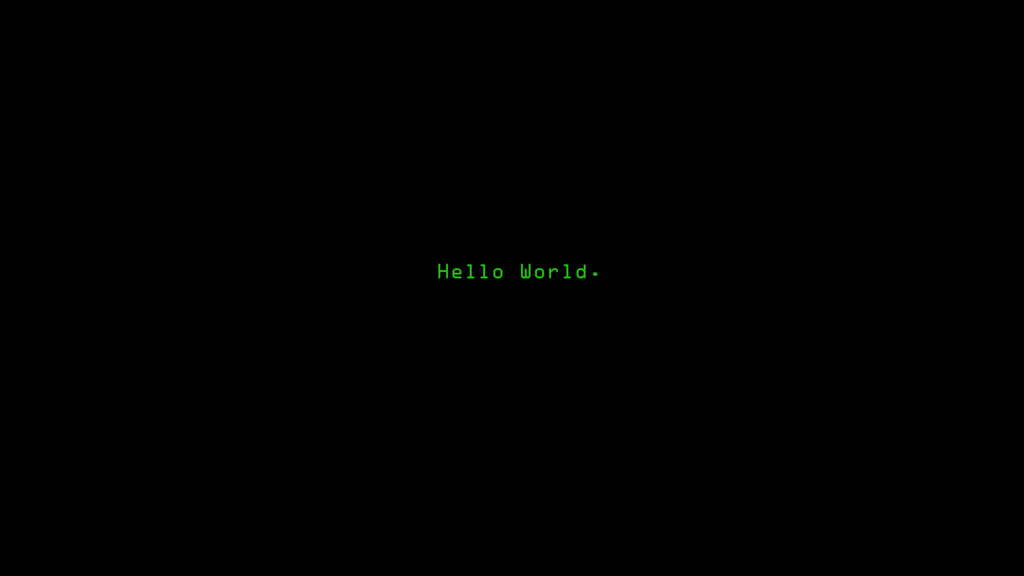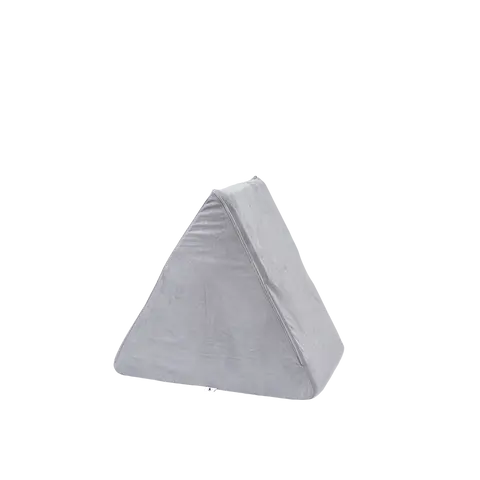Recently, I switched from Windows to Linux, tried many distros, and ended up with the Ubuntu rolling-release. Things went well for some days, but I started facing some issues like printer issues, gaming performance issues, and overall Ubuntu performance issues. So, I switched to where it all started, which is Windows 10. Now I’m on Windows, but the likeness and pleasure of using Linux are still with me.
So, what I wanted was a faster, rolling-release, easy-to-use distro with easy installation of Nvidia proprietary drivers.
What I have now planned is Fedora, because I like it. The issue with Fedora is that I can easily install the Nvidia driver, unlike Ubuntu. Can I search for the driver in the store or something else?
Or anything better than a fedora.
Graphics card: GT 730. I quit gaming, so gaming was not an issue anymore.
So, what I wanted was a faster, rolling-release, easy-to-use with easy installation of Nvidia proprietary drivers
EndeavourOS. It’s Arch-based, so it’s a rolling release, the install Nvidea driver option is right on the boot menu when you first install, it’s easy to use (and easy to install) and has a Wecome tool to help you navigate if you’re not used to Arch. And, at least in my experience, it’s fast
There’s some drawbacks tho. It’s on the lighter side: good if you wanna pick and choose what you wanna have on your system, not so good if you want something that’s ready to go OOTB. Another thing is most of the action takes place in the Terminal, hence the “terminal-centric distro” thing. That’s easily fixable tho, since you can either re-enable your Discover shop (KDE), the Gnome software center’s already good to go, or just install Octopi or Pamac if you really don’t wanna use the terminal for stuff.
Give it a go if you. It cured my distrohopping and basically ensured I’ll never go back to Windows (long term anyways. Temporarily, well, sometimes you gotta).
Recently switched to #EndeavourOS after using #LinuxMint for 9 months. Love it.
I scrolled to find this. EndeavourOS has done a great job at making Arch easy to install, and you get the best of both worlds.
I ran base Arch for years on a laptop, then went to Artix to lighten the load when systemd started misbehaving in odd ways. But I’m really liking the EndeavourOS experience.
Good choice!
I’ve been running endeavour on a little tablet PC with kde. It’s been pretty great overall, but I’ve also gotten interested in Manjaro. Thoughts on how they compare? I read one article that was like, whatever you like better!
Manjaro is…tricky.
I’ve called it an Arch based distro that kinda sucks at being an Arch based distro before, and I stand by that. You can’t treat Manjaro like you would EndeavourOS or Vanilla Arch Linux because of how Manjaro decides to do things: essentially, updates are held back by a couple of weeks for better and worse instead of being released as they’re made avaliable. While that means it can catch disastrous things like the GRUB issue another user pointed out (Manjaro was unaffected by it IIRC), it also means the system is prone to breaking itself more often. You can forget about using the AUR if you’re using Manjaro–or well, you can, but the AUR and Manjaro are nortorious for not playing nice with one another because of the latter’s tendencies to hold back packages.
Personally, I wouldn’t recomended. I had more trouble with Pop_Os!, yeah (even tho i can admit that’s my favorite spin of Gnome 3), but Manjaro just tested my patience more than anything else. However, If you don’t mind being extra careful with what you install (really that’s standard practice for any distro, but hey, I’ve never found a WIP package that messed up my system anywhere other than when using Manjaro, so make of that what you will), are willing to tolerate constant mild to severe breakage, and just using Flatpaks and appimages over the AUR, then give Manjaro a try.
That’s all great info, thanks for taking the time. This is my first go with Arch based. I work with Windows for a living and have used Debian based for years.
Endeavor has had a little bit of a learning curve, but sounds like I’ll be sticking with it.
I know they say they are a terminal based os, but any tips on some equivalent to a software center, or at least where I can find compatable apps?
Thanks for what you’ve already taken the time to write!
Pamac (either pamac-all or pamac-all-no-snap). You can go with Octopi if you want, but pamac should more than meet your needs–and personally, I like it better.
He’s looking for a distro with an easier install method when it comes to the nvidia drivers. EndeavorOS is arch based, and is the antithesis of easy. It’s just a graphical arch installer.
I use arch myself, but it takes alot of manual interventions to keep working. Look at the grub issue causing black screens, the repo swap, or the linux kernal that caused laptops with intel chips to flash full brightness on their screens backlight, that could have broken the screen, requiring a downgrade until it was fixed. Arch is fantastic, but it’s like a toddler you have to continuously keep from running head first into traffic at times. If they’re ok with that I’d say go full send. Endeavor is a fantastic distro
I’d argue fedora, or nobara, are great options. Same with opensuse tumbleweed. No idea what the issue is on those systems with nvidia drivers though sadly, so I couldn’t help
What is a Ubuntu rolling release? You mean Rhino Linux? Thats unofficial AF, not recommended at all.
Rolling: Opensuse Tumbleweed, Fedora, EndeavorOS, etc.
Fedora isn’t rolling release.
Semi rolling something
Check out Nobara, it’s basically Fedora with tweaks and automatically installs the Nvidia drivers for you.
I don’t know what is Ubuntu rolling-release and I’ve been using Linux for twenty years.
If you’re a beginner, just stick to Linux Mint. If you really need a rolling-release distro, use OpenSUSE Tumbleweed and learn how to install, whatever your choice, the Nvidia drivers from your distro wiki/forums.
You never really said what you like about linux or why you even want to use it. You want an ‘easy-to-use’ distro, but I’ve never really run into a ‘difficult-to-use’ distro, and that’s going back to the Slackware/RedHat 4.2 days. PopOS!, Ubuntu, EndeavourOS, Slack, Debian, they’re all ‘easy-to-use’ when you don’t specify a use case.
Personally I love the challenge, and that nothing is forced on me. It took me a good 30 minutes yesterday researching and trying to figure out how to get spell checking working in qutebrowser, and I got a little dopamine hit when I was finished.
Windows doesn’t make me excited to use a computer. Linux does, because it’s challenging.
Some people don’t want their computer to be a challenge. They don’t want to be able to notice the operating system at all. For most people, the operating system is a means to an end.
I completely agree, though in that case I can’t see what the advantage would be if you already have Windows, to switch to Linux. It’s a challenge, you’re going to be constantly looking for alternatives to software you’ve used for years. Let’s face it, the software world is still primarily focused on Windows, and while there are a lot of developer and server packages that Just Work Better™ on Linux, but if you’re an end user who’s only interested in gaming, why bother?
That’s the reason why the people who switch from the default operating system are a small minority.
@NateNate60 @BaconIsAVeg i learned Linux 22 years ago because if work. I enjoy operating systems and don’t really get the zealotry of some. I run Arch on my main machine and manage Centos and Debian server farm. In my opinion, Mac run best on OSX. If you want to run Linux, just get a Dell or HP or any of the many Intel manufacturers. These are all tools nothing more.
Pop!os and mint are the usual go-tos for easy windows-like experiences
I am however physically incapable of not recommending NixOS at any chance I get, it is by far the best experience I’ve had on Linux so far having tried a good number of distros (provided you have some knowledge of how config files work and don’t mind installing software through one)
Simple Fedora, never had a better Linux Expirience ! Theres a new Video from Fedora Flock about State of Gaming on Fedora. It shows how easy it is to use the drivers and get steam up and running (–> activate Non-free Repos in softwarecenter settings and search for nvidia).
Yes, you can easily install the Nvidia driver on fedora, if you check the “enable third party repos” checkmark in the 1st time setup.
Honestly, if you don’t wanna screw around at all, or use the terminal, then fedora is pretty hard to beat. Now 1 issue you might have is that older Nvidia cards tend to not work well with something called Wayland, that fedora uses out of the box for it’s desktop, though you can change it easily at the login prompt, just click on the gear icon and select “gnome on Xorg”… if you’re having issues that is
For Nvidia popos is best
Maybe give Pop_OS a try. It’s Debian/Ubuntu based and works well. It’s tiling extension makes gnome usable for me (and it’s optional/off by default).
Nvidia is a breeze (included with the image iirc).
Just go for Pop_OS!
i have a manjaro install that has been going for 2+ years. with a Nvidia card.
just read the wiki on every update, and follow instructions.
on install select btrfs as the filesystem and than use timeshift to do backups.
You don’t have to switch, you can dualboot if you have some disk space to spare.
Unfortunately the only rolling-release distro I’ve ever used for more than 10 minutes is Arch Linux, which is not “easy to use”; it’s not hard, but you have to tinker with it every now and then (especially in the beginning, since you have to set everything up) - if you run
pacmanupdates without looking at the archlinux.org frontpage beforehand you might find yourself with a malfunctioning bootloader or something on that nature.AL updates are known for breaking things a few times, but in my opinion it offers a good compromise between DIY and … y’know, Ubuntu.
maybe “OpenSuse tumbleweed” ?
The gaming performance issues you were facing might be related to Vulkan support for the card, if it works better on Windows, as apparently Kepler cards don’t have great support for Vulkan: https://bbs.archlinux.org/viewtopic.php?id=273935
I see Vulkan 1.2 is actually the latest version of Vulkan that supported Kepler architecture GPUs like the GT 730, which stopped receiving non-security updates after October 2021: https://nvidia.custhelp.com/app/answers/detail/a_id/5202/~/support-plan-for-kepler-series-geforce-gpus-for-desktop
On Windows, games probably used OpenGL. If you were playing games with Proton, it prefers DXVK because it offers better compatibility and performance than wined3d’s OpenGL translation layer. DXVK 2.0 and onwards have used Vulkan 1.3, which requires a GPU newer than yours. I don’t know whether Steam (and Proton 8+) falls back to using DXVK 1.10 or falls back to OpenGL/wined3d.
Either way, that means you haven’t been getting the latest performance improvement updates in DXVK since late 2022. So force-enabling wined3d’s OpenGL translation layer with
PROTON_USE_WINED3Dmight help, if it’s not doing that already? I don’t know if OpenGL would actually perform better, so this is kind of a long shot…If you were playing Native GNU/Linux games, it might be different.
I second the openSUSE recommendation. My brief experience with it was really nice.
Edit: Ah, I see you’ve quit gaming, lol. Well, either way, if you use Wine with DXVK, maybe the above will help.














